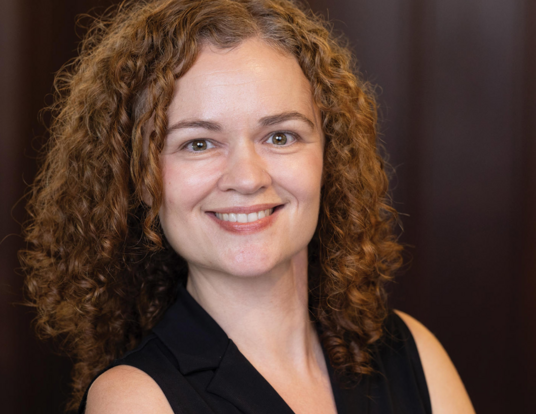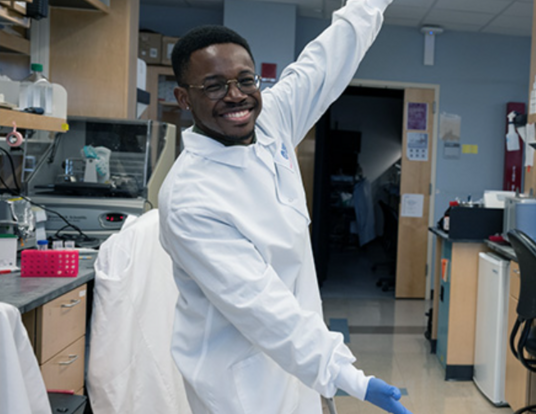Colloquy Podcast: Childhood Violence, Mental Illness, and Bias
Research at Risk: Since World War II, universities have worked with the federal government to create an innovation ecosystem that has yielded life-changing progress. Now much of that work may be halted as funding is withdrawn. Find out more about the threats to medical, engineering, and scientific research, as well as how Harvard is fighting to preserve this work—and the University's core values.
Growing up in Ferguson, Missouri, Harvard Griffin GSAS PhD student Steven Kasparek witnessed violence. He experienced it himself. He was left with some burning questions about which children go on to thrive and which struggle in the wake of exposure to violence. In this episode of Colloquy, Kasparek presents his research on the ways that childhood violence can shape bias—and bias can shape mental health throughout our lives. He also suggests new strategies to help protect violence-exposed youth from developing mental health problems that may ultimately undermine their success and well-being. (Note: This talk was originally given during the Harvard Horizons Symposium in 2023.)
Up to 60% of children raised in the United States experience violence. This includes experiencing physical or sexual abuse or witnessing domestic or community violence. And the more violence children experience, the more likely they are to develop mental health problems like depression and anxiety.
And I would know. I experienced and witnessed violence as a child born and raised in under-resourced neighborhoods of Saint Louis, Missouri, including Ferguson, a place now associated with police violence and Black Lives Matter protests following the murder of Michael Brown. To me, however, Ferguson was just where I grew up, and it wasn't until after I left Ferguson for college that I was able to reflect on my childhood.
And I've since realized that most people who grow up in places like I did don't end up speaking with big audiences of wonderful people like you in beautiful spaces like this one, and especially not at institutions like Harvard. The question is, why? Why do kids like me rarely end up here?
As a PhD student in clinical psychology here at Harvard, I strive to better understand which factors help us predict who is most likely to develop mental health problems after experiencing violence. And today, I'll tell you about some of the research I've done to begin addressing this question.
To start, I recruited a large sample of 100 children, represented here as dots. The children were recruited between ages 5 and 6 years old, and we collected data from them over several years until they were between 9 and 10 years old to help us better understand how early experiences relate to mental health outcomes down the road.
At the first wave of data collection, when children were between 5 and 6, we conducted extensive interviews with their caregivers to learn about the children's exposure to violence. We then used that information to separate kids into two groups.
Every kid in the violence-exposed group reported experiencing things like being beat up in their community, being hit really hard at home by family members, or seeing caregivers hit each other. None of the kids in the non-exposed group reported experiencing any violence.
Two years later, when kids were between 7 and 8 years old, we interviewed the families about the children's depression and anxiety symptoms, which enabled us to tease apart who was doing relatively well and who was at risk for suffering. We also had the kids complete a task designed to measure differences in how they process social information.
Now, social information might include the behaviors of others or whether people are similar to or different from us in important ways. And humans use this information to differentiate between in-groups made up of people we trust, identify with, and feel safe with, and out-groups made up of those we may not connect with or who may feel dangerous to us.
And this process helps us to form and prioritize the social bonds most likely to contribute to our well-being. But how might this relate to violence exposure? Well, children seeing people hurt each other or being hurt themselves would likely be an important source of social information they would use to inform whether they trust and connect with the people around them.
And so to test this theory, I randomly assign the kids in my study to one of two groups made up of other fictional kids their same age and gender. And though the assignments were random, the kids were told that all the other kids in their group had similar interests, such as having the same favorite toy.
We then use the behavioral test to measure how much the kids subconsciously favored this new in-group compared to the out-group, and we call that bias in-group favoritism. The ability to quickly develop in-group favoritism for new groups is really important for humans because as a social species, we need to form strong in-group bonds to survive and thrive.
Take a moment to think about where you'd be without close friends, close colleagues, and family.
And finally, two years later, when kids were between 9 and 10 years old, we remeasured their symptoms of depression and anxiety.
So just to quickly recap, ages 5 to 6, we measured violence exposure. Two years later, when kids were 7 and 8, we measured depression and anxiety symptoms and also measured in-group favoritism. And then, when they were 9 to 10, we remeasured symptoms of depression and anxiety.
And from this intensive five-year study, we learned that kids who did not experience violence developed strong in-group favoritism, which is what we would normally expect. However, those who experienced violence developed much weaker in-group favoritism by comparison.
We also learned that those who developed strong in-group favoritism were less likely to develop depression and anxiety symptoms over the following two years. However, those who developed weaker in-group favoritism developed more symptoms of depression and anxiety.
And because we measure these things over time, we were able to show using advanced statistical modeling that experiencing violence may cause weaker in-group favoritism, which may in turn cause worsening depression and anxiety.
And that means we've identified reduced in-group favoritism as a new mental health risk factor.
But remember, each of these dots is a child. So what might this look like in the life of a child?
Well, experiencing violence may make it harder for children to trust people throughout life. In turn, it may be harder for them to form social bonds and integrate into new social groups. And this may put violence-exposed youth at increased risk for depression and anxiety because as we've been talking about, strong in-group bonds are necessary for our mental health and well-being.
That said, I have hope. And what I really want each of you to take away from this talk today is a sense of hope as well.
Establishing this new mental health risk factor is a crucial first step, but the ultimate goal is to partner with clinicians and other scientists to translate this knowledge into new treatment and prevention strategies.
Those strategies may be able to help protect violence-exposed youth from developing the mental health problems that may ultimately undermine their success and well-being.
And my personal dream is if we succeed in that goal, maybe more kids like me can make it to places like this.
Get the Latest Updates
Join Our Newsletter
Subscribe to Colloquy Podcast
Simplecast




